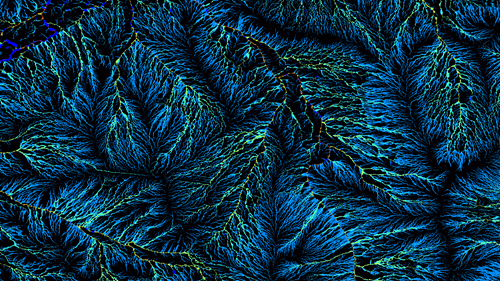The discovery is reported in the journal Nature today.
After the Big Bang, the universe cooled and went dark for millions of years. In the darkness, gravity pulled matter together until stars formed and burst into life, bringing the 'cosmic dawn'.
This new-found signal marks the closest astronomers have seen to that moment.
"Finding this miniscule signal has opened a new window on the early universe," lead author Dr Judd Bowman of Arizona State University said. See explanatory video.
Dr Bowman has been running his Experiment to Detect the Global EoR (Epoch of Reionization) Signature (EDGES) for 12 years. Nine years ago he started doing the observations from CSIRO's Murchison Radio-astronomy Observatory (MRO), after searching for the best place on the planet for this work.
The radio signal Dr Bowman's team found was incredibly faint, coming from 13.6 billion years back in the universe's history.
It also fell in the region of the spectrum used by FM radio stations, making detection of this weak signal from most Earth-based sites impossible.
The MRO observatory is in a naturally extremely 'radio-quiet' location. This unique characteristic is protected by a legislated 'radio quiet' zone up to 260 km across, which keeps human-made activities that produce interfering radio signals to an absolute minimum.
The MRO's development was managed by Antony Schinckel, CSIRO's Head of Square Kilometre Array (SKA) Construction and Planning.
"Finding this signal is an absolute triumph, a triumph made possible by the extreme attention to detail by Judd's team, combined with the exceptional radio quietness of the CSIRO site," Mr Schinckel said.
"We worked hard to select this site for the long-term future of radio astronomy after exhaustive investigations across the country. We believe we have the gold standard in radio quietness, the best site in the world.
"This is one of the most technically challenging radio astronomy experiments ever attempted. The lead authors include two of the best radio astronomy experimentalists in the world and they have gone to great lengths to design and calibrate their equipment in order to have convincing evidence for a real signal," Mr Schinckel said.
Dr Robert Braun, Science Director at the SKA Organisation said "this is a powerful demonstration of what can be achieved with the combination of an excellent site and world-class engineering, boding well for the great discoveries that will be enabled by the SKA."
Dr Bowman praised the support he had received from CSIRO.
"The infrastructure and logistical support that CSIRO has provided for EDGES has enabled our small team to focus on developing the new instrumentation and techniques needed for the experiment.
"CSIRO's operations team at the MRO has been phenomenal. They have helped to install the experiment and maintain it between our visits to the site. Their expertise has been invaluable, they helped us learn how to operate in the outback environment.
"In addition astronomers at the Curtin University node of ICRAR supported the EDGES project by sharing equipment and supplies on site at the MRO," Dr Bowman said.
The MRO was developed by CSIRO for its Australian Square Kilometre Array Pathfinder (ASKAP) telescope and also hosts a low-frequency telescope, the Murchison Widefield Array, developed by an international collaboration, led by Curtin University.
These telescopes make use of the radio-quiet nature of the site and also are important precursors to the Square Kilometre Array itself. It is now the Australian site for the low-frequency telescope of the future Square Kilometre Array, SKA1 Low.
CSIRO hosts and manages a wide range of science-ready national research facilities and infrastructure that is used by thousands of Australian and international researchers each year.
CSIRO acknowledges the Wajarri people as the traditional owners of the Murchison Radio-astronomy Observatory site.

